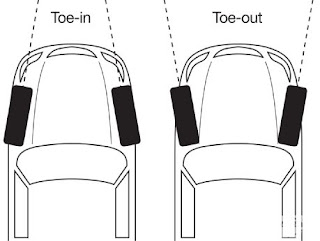 |
| Not Necessarily |
 |
| Up a creek, or in a creek? |
In 2010 BMW CEO Norbert Reithofer let it slip (link) that an internal study revealed "80% of BMW 1-Series owners thought their ultimate driving machine was front-wheel-drive." Well, that's embarrassing. It would seem that even BMW owners aren't aware of what makes their 'Ultimate Machines' so ultimate. Do you?
 |
| A pendulum has never been so interesting |
In Mechanical Engineering, complex problems are often related to any of several basic principles, one of which is the pendulum. You are probably thinking right now "wow, a pendulum, so what?" Pay attention, your mind is about to be blown. A pendulum is inherently stable because gravity pulls the mass downward and aligns the pendulum to a vertical position. If the pendulum is pushed such that it rocks side-to-side, it will always return back to the stable, vertical position.
 |
| An inherently unstable inverted pendulum |
 |
| Why your rear-drive car is an inverted pendulum |
 |
| The Honda Civic, losing races since 1973 |
Now hold on a moment, before everyone rushes out to buy a Civic Si or Neon SRT-4, you may want to keep reading. Front-wheel-drive has it's drawbacks too. Imagine you are launching from a standstill in your Honda Civic, what happens? The vehicle rotates about it's center of gravity due to the forward force, this rotation, or weight transfer, shifts weight off of the front wheels and onto the rear wheels. This transfer of weight is bad for a front-wheel-drive vehicle as it reduces traction and results in a big smoky burnout without any forward motion. A rear-wheel-drive vehicle benefits from weight transfer, but if launching on a street - traction is still a limiting factor.
 |
| Having one wheel spin like crazy isn't ideal, neither is a hole in your transmission. |
To make matters worse, your front-wheel-drive econobox likely has an 'open differential' which acts as a power fuse. Essentially, once a wheel loses traction, all power is transferred to that wheel which results in even more spinning. Ever notice during a front-wheel-drive burnout that one wheel spins while the other simply rolls? Open differential. (Note, the Neon SRT-4 came stock with a limited-slip style differential which did not have this issue, thanks Getrag!)
 |
| Can your rear-wheel-drive vehicle do this? |
It turns out that the answer to the question of "What drivetrain setup makes for the 'Ultimate' Driving Machine?" is quite complicated and subjective. A quick recap of everything presented so far is in the table below.
 |
| Muddying the drivetrain selection waters |
Which is best? It depends on what you are looking for. Do you want to go really fast in a straight line, and enjoy having the rear end kick out when turning under throttle? Maybe go rear-wheel-drive. Are you looking for a daily-driver that can only take on adversaries from a roll? Perhaps front-wheel is your choice.
I'm sure the Supra can launch on a well prepped track (Video Link)
The author's heavily biased point of view is that AWD > RWD > FWD.
- Axle



















